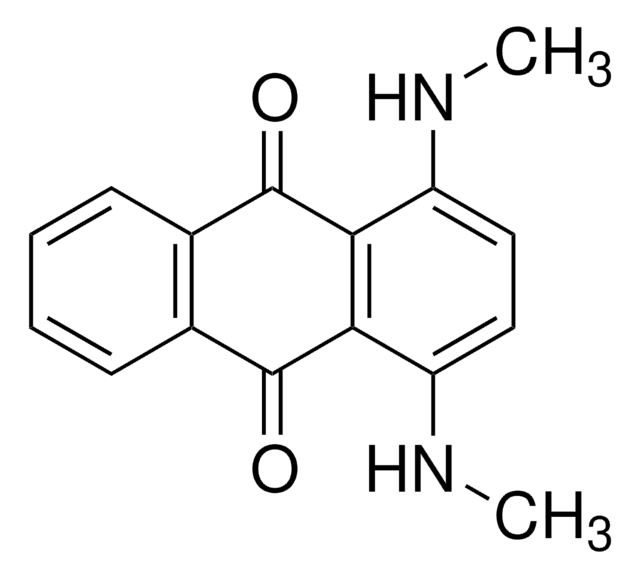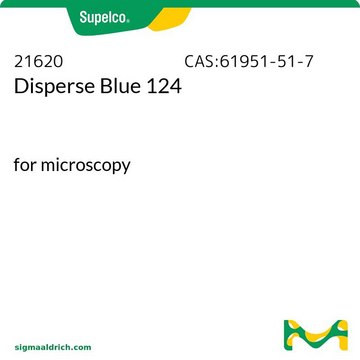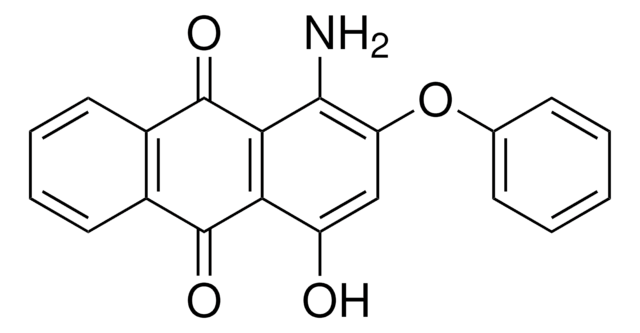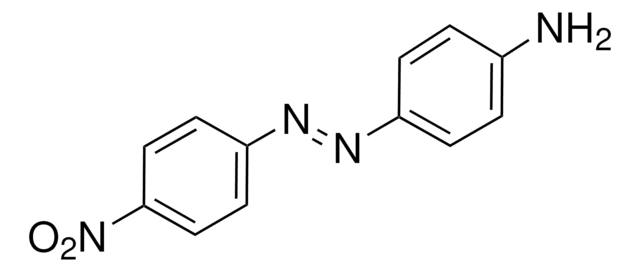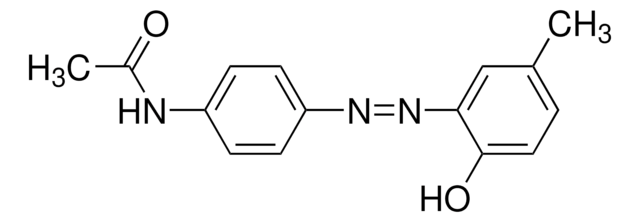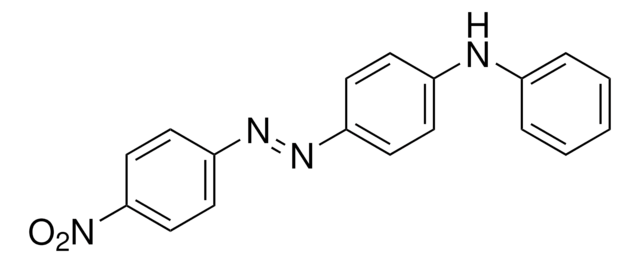Recommended Products
grade
for microscopy
Quality Level
technique(s)
HPLC: suitable
gas chromatography (GC): suitable
application(s)
cleaning products
cosmetics
environmental
food and beverages
personal care
format
neat
InChI
1S/C20H14N2O5/c21-11-5-6-12(24)15-14(11)19(26)16-13(25)7-10(18(22)17(16)20(15)27)8-1-3-9(23)4-2-8/h1-7,23-25H,21-22H2
InChI key
OXLITIGRBOEDEZ-UHFFFAOYSA-N
Looking for similar products? Visit Product Comparison Guide
Other Notes
Signal Word
Warning
Hazard Statements
Precautionary Statements
Hazard Classifications
Skin Sens. 1
Storage Class Code
11 - Combustible Solids
WGK
WGK 3
Flash Point(F)
Not applicable
Flash Point(C)
Not applicable
Personal Protective Equipment
Choose from one of the most recent versions:
Certificates of Analysis (COA)
It looks like we've run into a problem, but you can still download Certificates of Analysis from our Documents section.
If you need assistance, please contact Customer Support.
Already Own This Product?
Find documentation for the products that you have recently purchased in the Document Library.
Our team of scientists has experience in all areas of research including Life Science, Material Science, Chemical Synthesis, Chromatography, Analytical and many others.
Contact Technical Service
